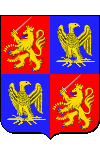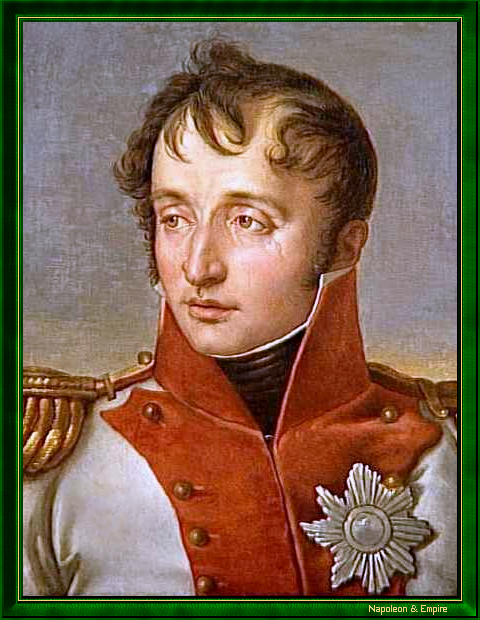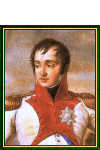Louis Bonaparte
King of Holland

As early as 1791, Napoleon Bonaparte took under his wing this young brother, nine years his junior (he was born Luigi Buonaparte in Ajaccio , Corsica, on September 2, 1778, in the family home on rue Malerba). After providing for his education, he made him his aide-de-camp in Italy and Egypt.
In 1802, almost against his will, Louis married Hortense, daughter of Joséphine de Beauharnais. She bore him three sons, the youngest being the future Napoleon III, Emperor of France from 1852 to 1870.
Louis Bonaparte became Grand Constable on the proclamation of the Empire, then King of Holland in 1806 (he was the first to bear this title) under the name of Lodewijk I. He took his new dignity very seriously, learning Dutch in particular, and tried to convince his subjects that he had become a Dutchman at heart.
But Napoleon I gave him no room to maneuver. After many clashes between the two brothers, the neurasthenic Louis finally abdicated on July 3, 1810, before fleeing to Austria. A week later, Holland was reunited with the Empire.
In 1814, when war resumed between Austria and France, he went to Switzerland, then, when the Allies entered, settled in Paris despite his brother's prohibition.
Back in Switzerland, he was the only member of his family to refuse the pension guaranteed to him by the victors under the Treaty of Fontainebleau. In 1815, he remained a stranger to Napoleon's return.
Louis Bonaparte then moved to Rome, then Florence, where he lived under the name of Comte de Saint-Leu in the Gianfigliazzi palace on the banks of the Arno, in a misanthropic retreat, devoting himself to literature and his Memoirs. He died in Livorno, Tuscany, on July 25, 1846.
Since the Second Empire, he has been buried in the parish church of Saint-Leu-La-Forêt , in the Val d'Oise, where he owned a château.
"Louis Bonaparte, King of Holland", by Jean-Baptiste Joseph Wicar (Lille 1762 - Rome 1834).

Louis Bonaparte's name is inscribed at the top of the 25th column (south pillar) of the Arc de Triomphe de l'Étoile .
Freemasonry: Louis Bonaparte was Grand Master of the Supreme Council of the 33rd degree in France.
King Louis XVIII XVIII, however reluctant to praise, gave Louis Bonaparte a remarkably favorable assessment: Louis Bonaparte is truly king by his abdication. By laying down his crown, he showed that he was worthy of wearing it. He is the first monarch to have resolved to such a sacrifice solely out of love for his country
.
Other portraits

"Louis Bonaparte, King of Holland", by Charles Howard Hodges (1764 - 1837).

"Louis Bonaparte, King of Holland, with his son Louis Napoleon" (detail), by Jean-Baptiste Wicar.